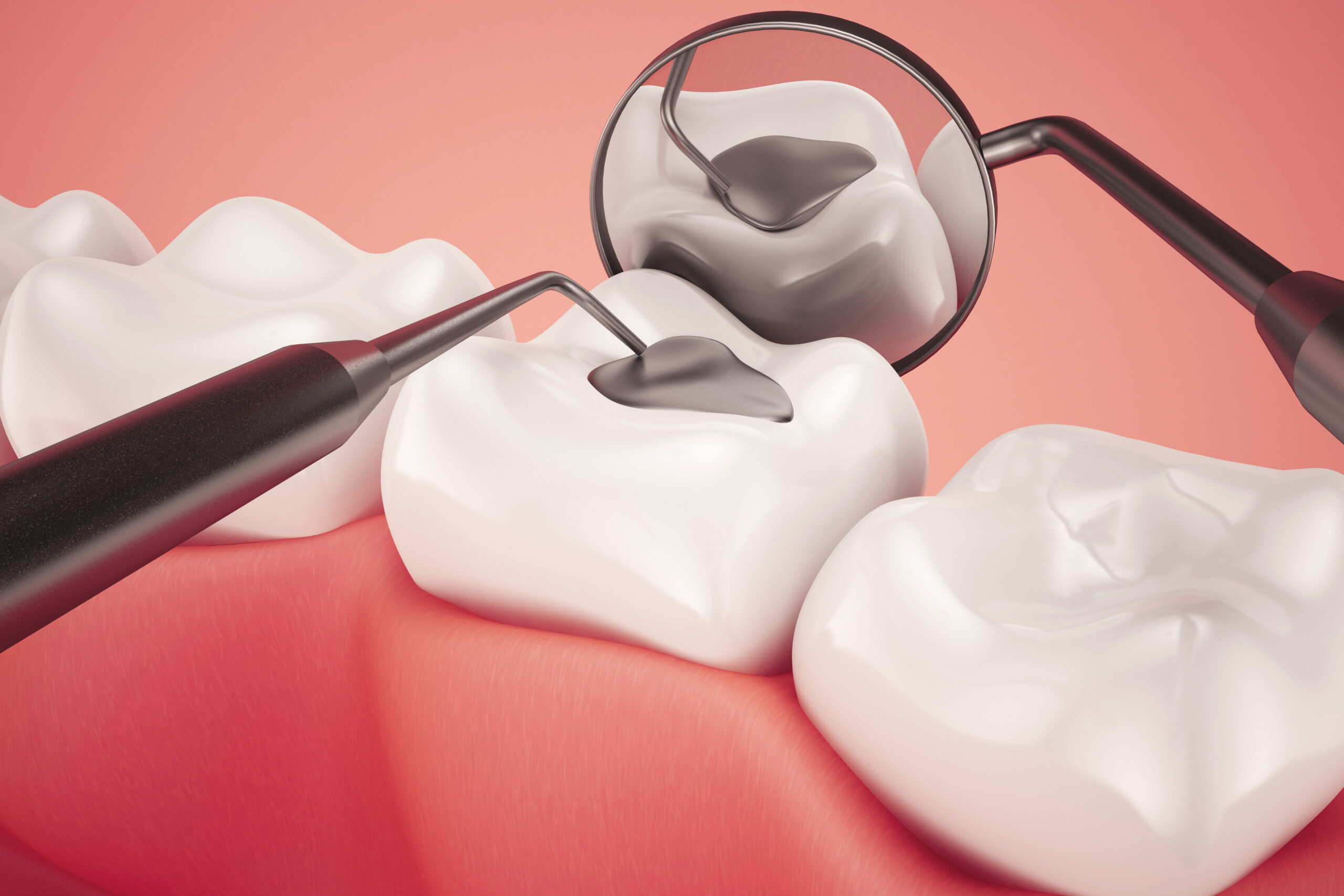Fillings improve the function and appearance of teeth by restoring damaged or decayed teeth to their original state, providing strength, comfort, and aesthetic appeal. Cavities or damage to teeth can affect both their function and the way they look. Dental Tooth Filling help to reverse these issues, ensuring that your teeth remain healthy, strong, and visually pleasing. This article will explain how fillings serve a dual purpose—improving both the function and appearance of your smile.
Restoring the Function of Your Teeth:
One of the primary reasons fillings are essential is because they restore the normal function of a tooth. Whether you have a cavity, crack, or chip, fillings help to restore the structural integrity of the tooth, allowing you to chew and bite normally again.
Here’s how fillings help with the function of your teeth:
-
Preventing tooth breakage – Fillings seal damaged areas and strengthen the tooth, preventing further cracking or breaking
-
Restoring chewing ability – A filling allows you to chew food without discomfort or concern about damaging the tooth
-
Supporting overall oral health – By filling cavities, you avoid the spread of decay that could lead to larger issues like root canals or extractions
-
Ensuring a pain-free experience – Fillings eliminate the pain caused by cavities, reducing sensitivity to hot or cold food
With fillings, you can enjoy the full function of your teeth without worrying about damage or discomfort.
Aesthetic Benefits of Tooth Fillings:
Fillings aren’t just about restoring function—they can also greatly improve the appearance of your teeth. For people who are concerned about the visual impact of a cavity or cracked tooth, fillings offer an aesthetically pleasing solution.
Here are the aesthetic benefits of fillings:
-
Tooth-colored options – Composite or porcelain fillings blend seamlessly with the natural color of your teeth, offering a more discrete solution
-
Better smile appearance – Fillings can be used to fix cracked, chipped, or worn teeth, leading to a more uniform smile
-
Invisible repairs – Unlike metal fillings, modern fillings can be virtually invisible, making them ideal for front teeth
-
Long-lasting aesthetic appeal – Composite and porcelain fillings resist staining, maintaining their appearance over time
With the right filling, you can enhance both the function and the visual appeal of your teeth, giving you a natural-looking smile.
How Fillings Prevent Further Damage?
By filling cavities and repairing broken or chipped teeth, fillings prevent the damage from spreading. If left untreated, decay and damage can worsen, leading to more significant issues that could require expensive procedures like root canals or extractions.
Here’s how fillings protect against further damage:
-
Sealing off bacteria – Fillings close off cavities and cracks, preventing bacteria from infiltrating the tooth and causing deeper damage
-
Stopping decay progression – A filling halts the spread of decay by providing a barrier against more plaque buildup
-
Preserving tooth structure – Fillings restore the tooth’s strength, allowing it to withstand regular chewing forces without further deterioration
-
Protecting gums – By preventing decay from spreading into the gums, fillings also help protect against gum disease
In this way, fillings are an effective preventive measure, ensuring that your teeth remain intact and healthy.
The Types of Fillings for Function and Appearance:
There are various types of fillings that can improve both the function and appearance of your teeth. The material used will depend on the cavity size, tooth location, and your aesthetic preferences.
Here are the most common types of fillings and how they impact your smile:
-
Amalgam Fillings – These are durable, cost-effective, and ideal for back teeth, where appearance is less of a concern
-
Composite Fillings – These tooth-colored fillings offer a natural look and are commonly used for visible teeth
-
Porcelain Fillings – Known for their strength and aesthetic appeal, porcelain fillings mimic the appearance of natural tooth enamel
-
Gold Fillings – While visible, gold fillings are highly durable and provide long-term functionality
-
Glass Ionomer Fillings – These release fluoride and are often used for smaller cavities or in areas that are less visible
Each material offers different advantages, so working with your dentist will help you choose the best option for your needs.
Maintaining Fillings for Long-Term Function and Appearance:
While Dental Tooth Filling Treatment can improve the function and appearance of your teeth, proper maintenance is key to ensuring they last and continue to protect your oral health. Taking care of your fillings is just as important as the procedure itself.
Here are tips to maintain your fillings:
-
Brush and floss regularly – Proper oral hygiene helps prevent plaque buildup around fillings
-
Avoid sticky or hard foods – These can damage or dislodge your fillings
-
Get regular dental check-ups – Your dentist will check for any issues with your fillings during routine exams
-
Stay hydrated – Drink plenty of water to maintain good saliva flow, which helps wash away food particles around your fillings
-
Address issues early – If you notice any discomfort or signs of wear, visit your dentist immediately to avoid further damage
With the right care, your fillings can last for many years, continuing to protect your teeth and maintain their function and appearance.
Conclusion:
Fillings improve the function and appearance of teeth by restoring a tooth’s strength, protecting against further damage, and offering aesthetic solutions that blend seamlessly with natural teeth. Whether you need a filling for a cavity, crack, or cosmetic concern, fillings are a reliable way to preserve the health and beauty of your smile. Talk to your dentist about the best filling material for your needs, and make sure to follow up with good oral hygiene practices to maximize the benefits of your dental work.

